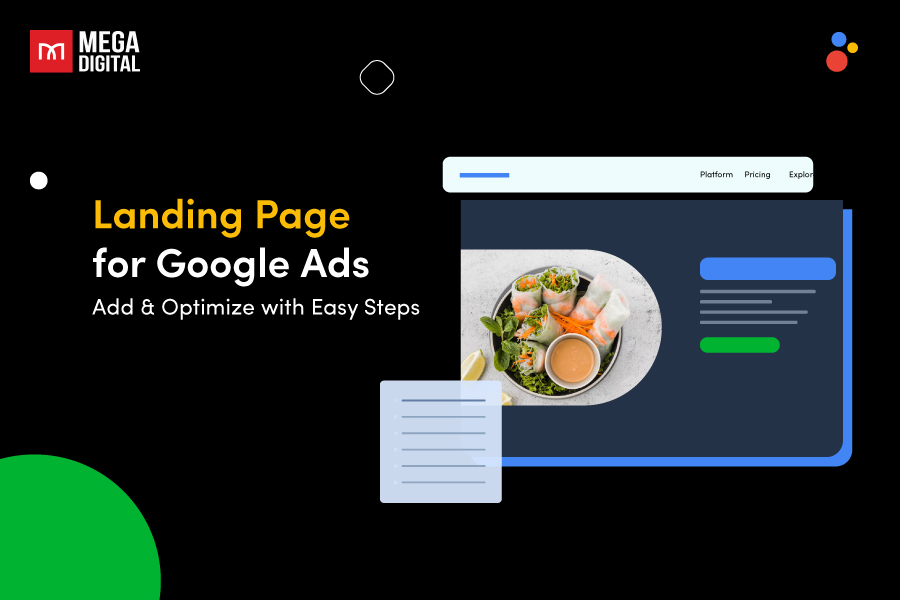Not sure if you should track – ROI vs ROAS? You’re not the only one. Many new advertisers wonder which metric truly matters for measuring success. With this blog post, you will clear up the confusion, know what each metric really tells you about your ad campaigns, and decide which one to focus on to grow your campaigns the right way!
What is ROI?
Return on Investment (ROI) is one of the most important metrics to assess the profitability of varying activities, campaigns, or investments. The metric tells how much profit you have made against what you spent, implying whether the investment was worth it.
ROI Formula

- Net Profit = Revenue – Total Costs
- Total Investment = All costs associated with the activity (not just ad spend)
Let’s say a company spends $50,000 on a new product launch and earns $75,000 in profit from it, the ROI would be 50%. This means that you have earned $0.50 for every dollar invested.
How ROI Works
ROI doesn’t measure just revenue. It assesses all associated expenses for product development, employee salaries, tools, shipping, and infrastructure. This makes it ideal for measuring the profitability of long-term or large-scale investments.
For example, a company spent $200,000 to release a new product. A year later, the profit amounted to $60,000. The return on investment, therefore, stood at 25%, demonstrating what a good return the investment has produced in the long term.
Benefits of Using ROI
- Provides a complete view of financial performance.
- Supports long-term business and marketing strategy.
- Helps justify how and where budgets are spent.
- Simplifies comparison among different campaigns or projects.
>>> Read more: What is Google Ads ROI: Ways to Calculate and Improve Your ROI
What is ROAS?
Return on Ad Spend (ROAS) measures the amount of revenue earned for every dollar spent on advertising. It’s used to assess the performance of paid campaigns and how efficiently the ad budget is being turned into revenue.
ROAS Formula

- Only includes direct advertising costs.
- Focuses on revenue, not profit.
How ROAS Works
As ROAS looks at how advertising expenditures correspond with revenue, this makes it perfect for tests, campaign comparisons, and real-time optimizations.
For instance, if one ad set produces $10,000 from $2,000 (ROAS = 5), while another produces $6,000 (ROAS = 3), you know at once which creative dominates.
Benefits of Using ROAS
- Tracks how well ad campaigns convert spend into revenue.
- Helps marketers adjust targeting, creatives, and bids quickly.
- Useful for measuring the impact of specific channels or strategies.
- Ideal for short-term performance and campaign-level decisions.
- Supports real-time budget optimization and testing.
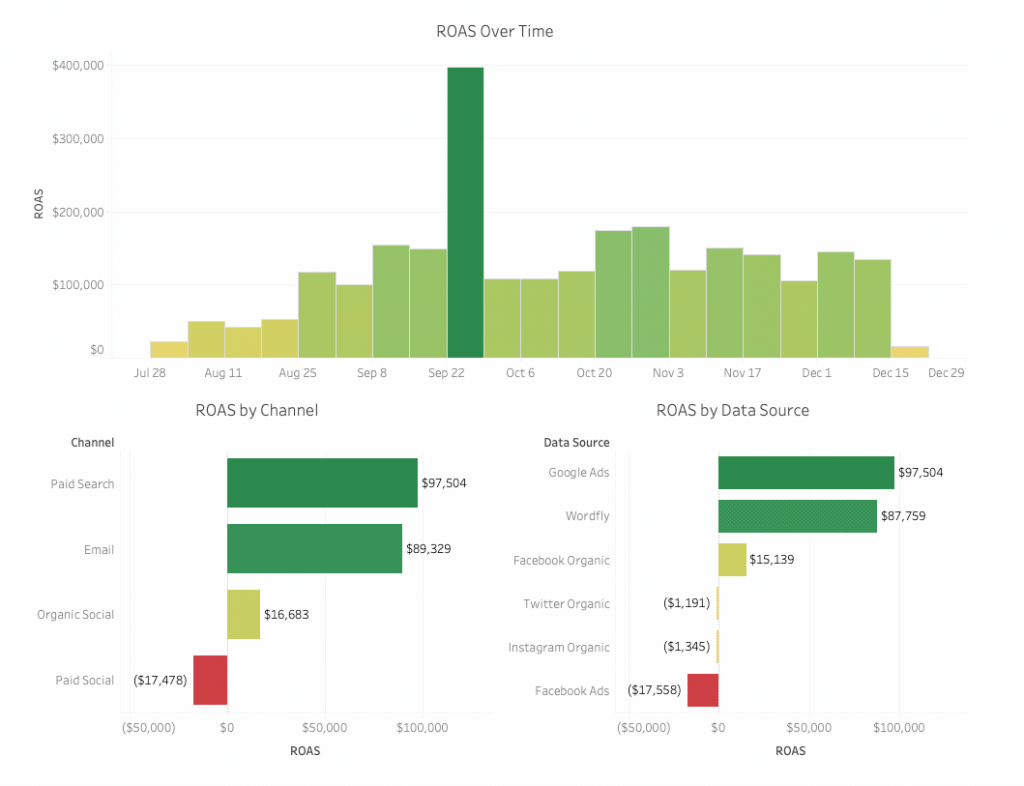
>>> Read more: Target ROAS in Google Ads: What is it and How to Maximize ROAS?
Differences Between ROI vs ROAS
Understanding the differences between ROI and ROAS is key to choosing the right metric for your marketing goals. Below is a breakdown of how they compare across key aspects:
1. Purpose
Let’s explore how ROI and ROAS differ in their core purpose. While both measure performance, they serve very different decision-making needs.
ROI
ROI helps determine overall profitability, other than just marketing efforts. Thus, it helps make big-picture decisions like starting a new product line or acquiring new equipment. For instance, a retailer would do an ROI calculation to assess whether a new store location would return profits after considering rent, salaries, and expenses.
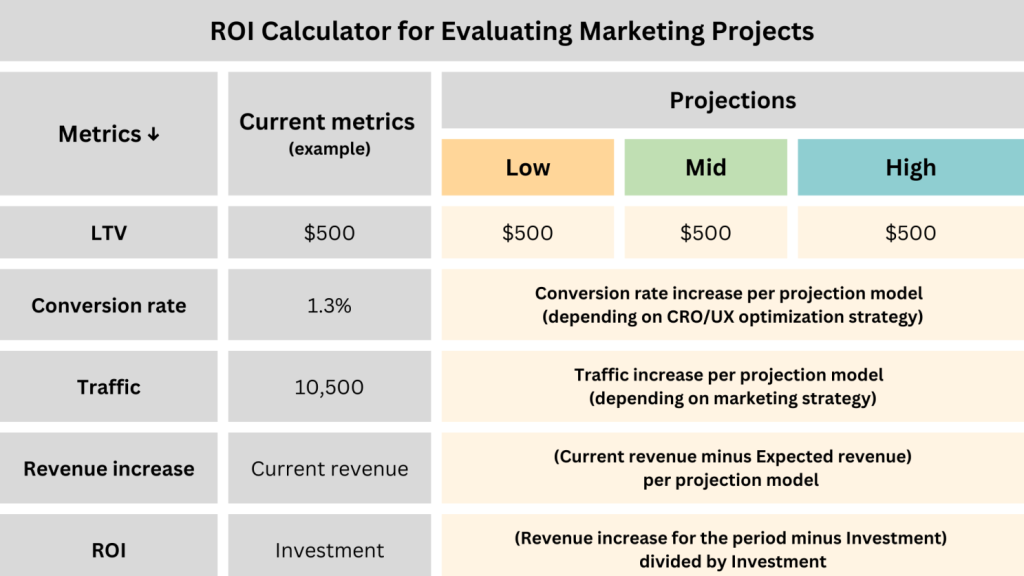
ROAS
ROAS is tied to advertising performance. For instance, if a Facebook ad campaign brings in $5 for every $1 spent, the ROAS Facebook ads is 5, helping marketers decide whether to scale or pause the campaign.
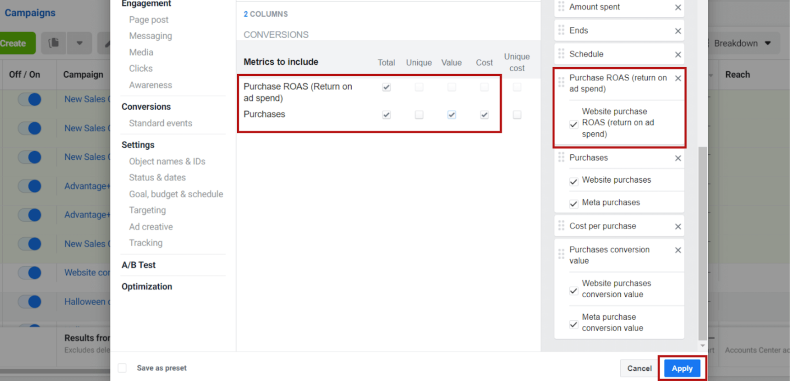
Conclusion
While ROI looks into the overall business effect, ROAS is for quickly, directly assessing the performance of ad campaigns.
2. Investment Type
Here’s a look at what each metric actually measures as an “investment”:
ROI
ROI considers total business investment, which can include both tangible and intangible resources. That means it tracks not only money spent but also time, human resources, infrastructure, or even opportunity cost.
For instance, if a company spends 6 months developing a new logistics system, the investment includes developer salaries, tools, time diverted from other projects, and rollout costs.
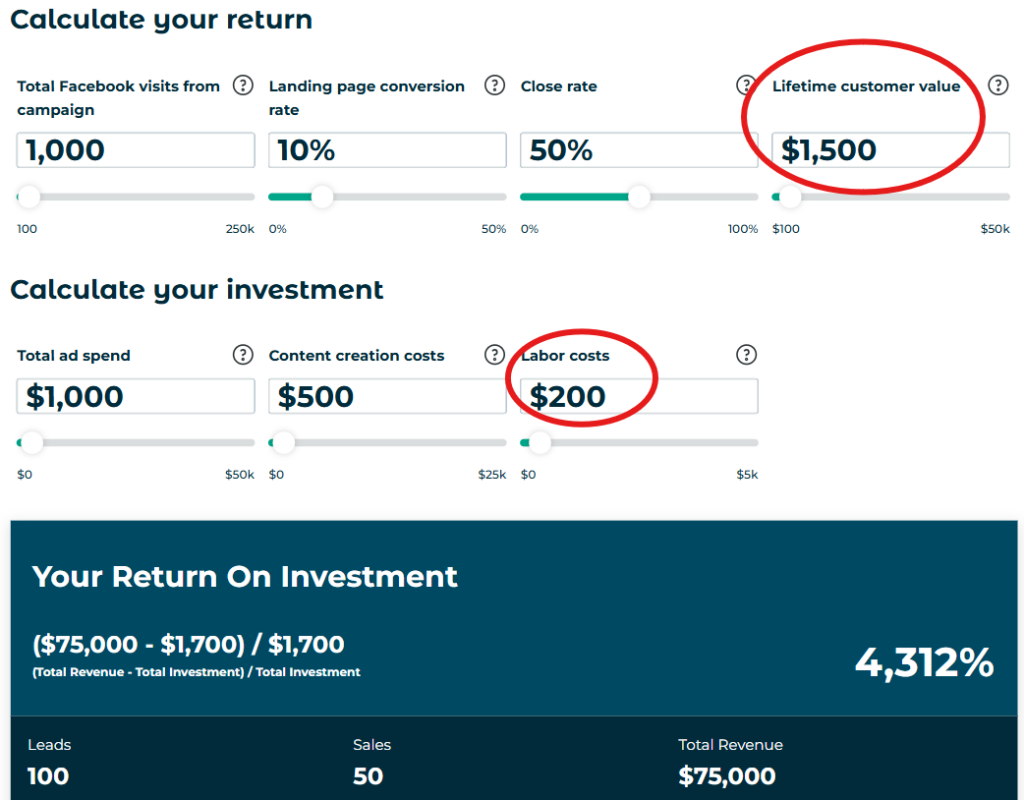
ROAS
ROAS focuses on a single, measurable input: ad spend. It does not factor in other resources like time, labor, or operational effort.
For instance, a Facebook campaign that brings in $50,000 in revenue on a $10,000 ad budget will show a ROAS of 5, even if fulfillment and staffing cut deep into that margin.
Conclusion
ROI deals with complex, multi-dimensional investments across business functions. ROAS isolates just the money spent on ads, making it ideal for channel-level performance tracking, not overall business health.
3. Profits
Let’s continue breaking down how each metric approaches profitability:
ROI
ROI is a profit-first metric. It’s designed to answer: “After everything we spent, what are we keeping?” This is especially valuable in CFO-level reporting, where revenue alone isn’t enough.
For example, a campaign may drive $500,000 in revenue, but with $480,000 in total costs, the ROI is low, even if the ROAS looks great.
ROAS
ROAS is a revenue-first metric. It shows how well ad dollars turn into top-line revenue, but doesn’t indicate if you’re making or losing money. It’s possible to have a strong ROAS but still be unprofitable if your costs outside ad spend are too high.
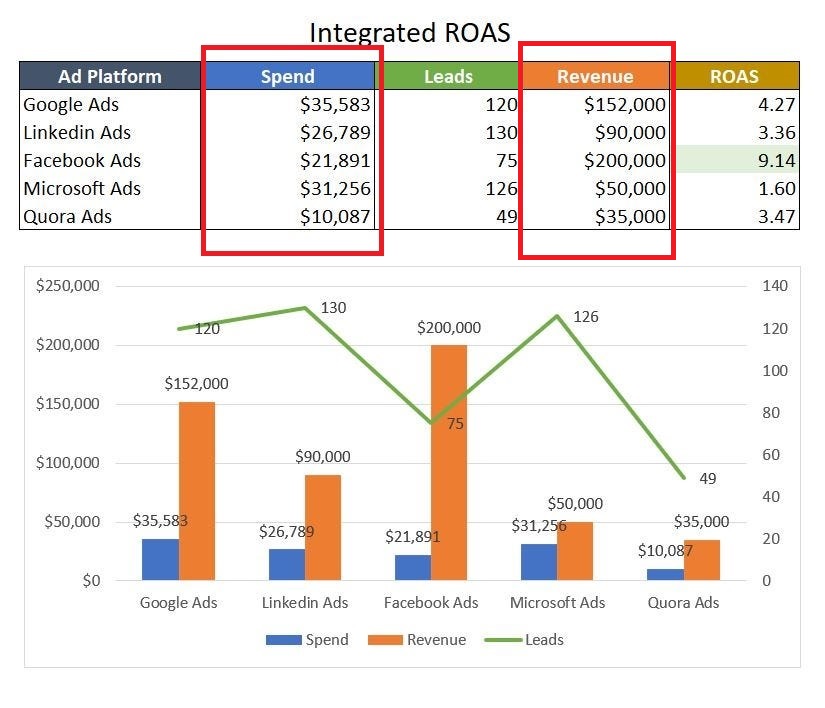
Conclusion
Use ROI when you’re focused on bottom-line profit. Use ROAS when your priority is scaling what brings in the most revenue per ad dollar.
4. Reliability
Below is how ROI and ROAS compare in terms of reliability for guiding business decisions. One offers depth and financial clarity, the other offers speed and ad-level precision:
ROI
ROI is more reliable for long-term financial planning because it reflects the actual business impact. It’s harder to manipulate or misread, since it considers full costs and profit. A high ROI is a solid signal that an initiative added value.

ROAS
ROAS is less reliable when used in isolation. It’s great for spotting high-performing ads, but misleading if used to gauge business success. Marketers who rely solely on ROAS may scale unprofitable efforts if they don’t look deeper.
Conclusion
ROI gives a grounded view of true financial return. ROAS is a fast feedback loop, but should be paired with cost analysis for better decision-making.
5. Results
Here’s how the output of each metric is used:
ROI
ROI delivers a holistic result, telling you whether a campaign was profitable. It’s commonly reviewed after a launch, quarter, or fiscal year to assess business performance.
ROAS
ROAS delivers a tactical result, used to evaluate performance in real time, ad by ad, or channel by channel. You might pause an underperforming ad set with low ROAS within a day, while scaling the one with the highest. It’s built for day-to-day optimization.
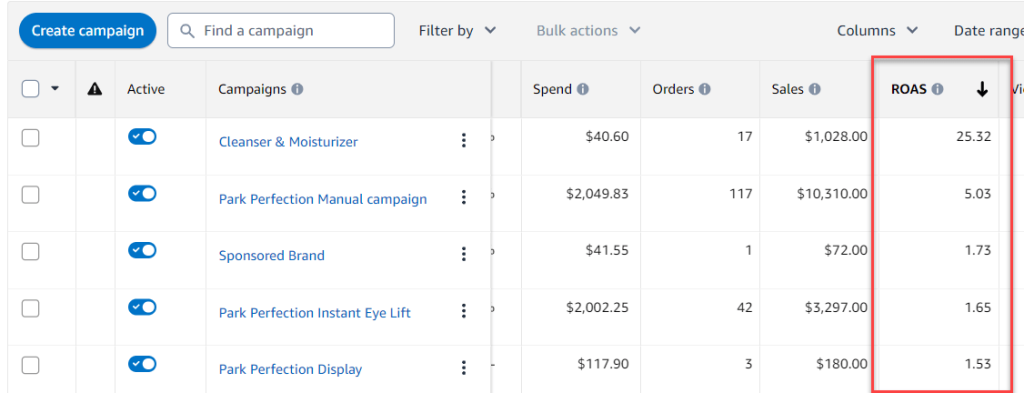
Conclusion
ROI is best for reviewing outcomes over time and across departments. ROAS helps marketers act fast, test, and fine-tune campaigns at the ad level.
When to Use ROI vs ROAS?
Not sure which metric to track? Below is a breakdown of when it makes the most sense to use ROI or ROAS, depending on your business goals and decision-making needs.
When to Use ROI?
Let’s explore the key situations where ROI is the right metric to guide your business or marketing decisions.
1. Planning For Long-Term Growth
ROI works best when the strategies you are investing in may not deliver immediate results but could build long-term value. For example, if you are expanding into a new market, ROI comes in handy to find out if the future benefits would justify the initial expense.
2. Evaluating Large-Scale Marketing Initiatives
ROI is ideal for measuring performance when campaigns span multiple teams, channels, and objectives, especially when results are spread out over time.
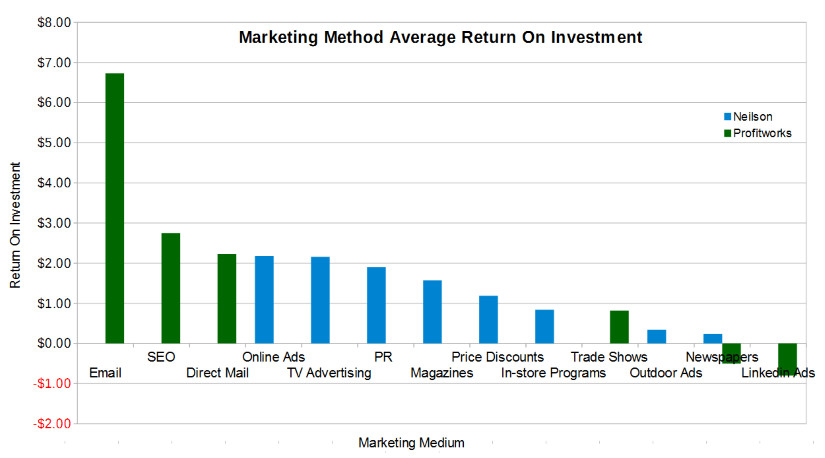
For example, a year-long rebranding campaign involving content creation, website redesign, and CRM integration won’t be captured by ROAS alone. ROI evaluates the cumulative return across all moving parts, not just the ads.
3. Reallocating Budgets
When deciding how to redistribute funds between teams, campaigns, or business units, ROI offers clarity on what delivers profit, not just traffic or visibility.
For instance, if two departments run campaigns with similar ROAS but one has high fulfillment costs, ROI helps you spot the more cost-efficient investment.
4. Assessing Total Business Profitability
You should use ROI rather than ROAS when evaluating whether a division has made profitable use of its capital.
This is especially useful in quarterly or annual reviews, where leadership needs to evaluate how efficiently teams or product lines are turning investments into actual profit.

5. Supporting High-Level Objectives
ROI supports strategic goals like increasing net margin, reducing cost-to-profit ratio, or improving investor confidence. It’s especially important when presenting performance to the C-suite or board members, where conversations center on sustainable value.
When to Use ROAS?
Here are the practical scenarios where ROAS is the more effective metric for marketers and media buyers:
1. Adjusting Your Campaign Immediately
Use ROAS when you need to make fast decisions based on live campaign performance.
For example, if you’re running multiple ad sets on TikTok or Meta and one starts underperforming within 24-48 hours, ROAS lets you identify and pause it quickly, before it drains budget.
2. Optimizing Ad Spend In Real Time
ROAS is ideal for the everyday ad budget adjustments. If your Google Ads campaign has an ROAS of 2 while your Meta campaign is hitting 4, for instance, you can immediately reallocate the budget toward whoever is bringing in more revenue.
This agility is very important when running promotions that may be time-sensitive.
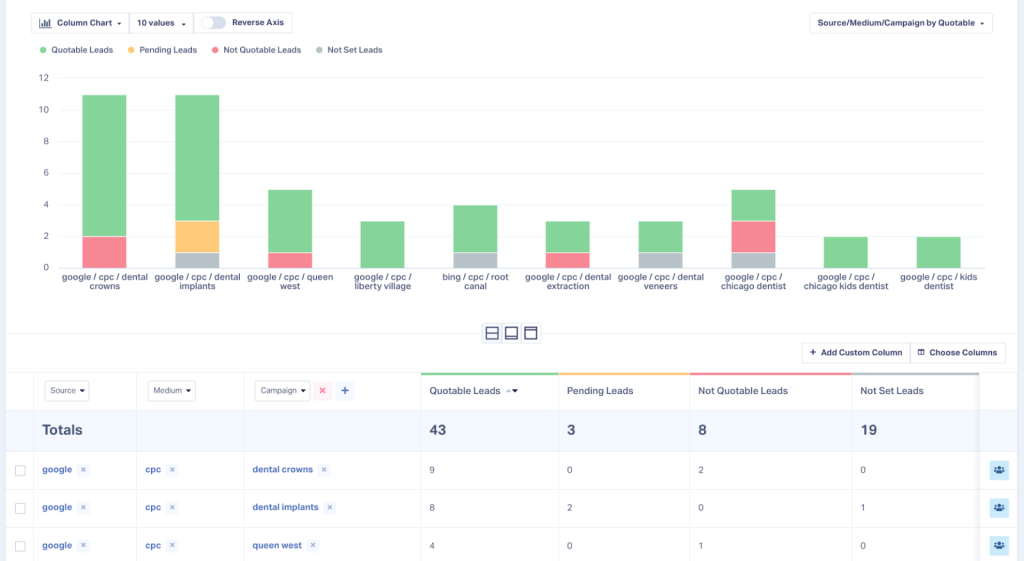
3. Clarifying Return On Targeting And Segmentation
If you are testing different audience segments like interests, behaviors, or lookalikes, ROAS shows which targeting options bring in the most revenue per dollar spent. This allows marketers to focus even more on their high-converting audiences, leaving out those that waste spend.
4. Adjusting Your Bidding Strategies
When running performance-based campaigns like manual bidding or cost cap bidding, ROAS helps determine which bid levels are producing enough return to justify scaling.
For example, if your current bid delivers a ROAS of 1.8 but your break-even point is 2.5, you’ll know to lower bids or tweak your approach fast.
Which is Better: ROI vs ROAS?
So, which is better: ROI vs ROAS? The answer depends on what you’re trying to achieve. ROI is best for big-picture profitability, while ROAS shines in real-time ad performance tracking.
The real advantage lies in understanding the strengths of each metric, as summarized below:
| Aspect | ROI | ROAS |
|---|---|---|
| Purpose | Strategic evaluation | Campaign optimization |
| Investment Type | Total business investment | Ad spend only |
| Profits | Net profit-focused | Revenue-focused |
| Reliability | Long-term accuracy | Short-term feedback |
| Results | Holistic result Reviewed after a launch, quarter, or fiscal year | Tactical result Real-time analysis |
As the table shows, ROI and ROAS aren’t competing metrics. They complement each other. While ROAS gives quick insights to help you manage ad performance, ROI offers a strategic view of overall profitability.
Understanding the differences between ROI vs ROAS allows you to make smarter decisions both in the short run and in the long run!
>>> Read more: 15 Must-Track Advertising Metrics for A Successful Campaign









